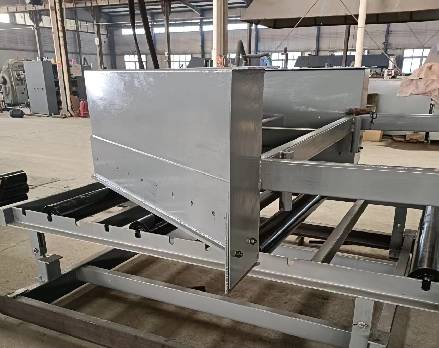 Afrikaans
Afrikaans  Albanian
Albanian  Amharic
Amharic  Arabic
Arabic  Armenian
Armenian  Azerbaijani
Azerbaijani  Basque
Basque  Belarusian
Belarusian  Bengali
Bengali  Bosnian
Bosnian  Bulgarian
Bulgarian  Catalan
Catalan  Cebuano
Cebuano  Corsican
Corsican  Croatian
Croatian  Czech
Czech  Danish
Danish  Dutch
Dutch  English
English  Esperanto
Esperanto  Estonian
Estonian  Finnish
Finnish  French
French  Frisian
Frisian  Galician
Galician  Georgian
Georgian  German
German  Greek
Greek  Gujarati
Gujarati  Haitian Creole
Haitian Creole  hausa
hausa  hawaiian
hawaiian  Hebrew
Hebrew  Hindi
Hindi  Miao
Miao  Hungarian
Hungarian  Icelandic
Icelandic  igbo
igbo  Indonesian
Indonesian  irish
irish  Italian
Italian  Japanese
Japanese  Javanese
Javanese  Kannada
Kannada  kazakh
kazakh  Khmer
Khmer  Rwandese
Rwandese  Korean
Korean  Kurdish
Kurdish  Kyrgyz
Kyrgyz  Lao
Lao  Latin
Latin  Latvian
Latvian  Lithuanian
Lithuanian  Luxembourgish
Luxembourgish  Macedonian
Macedonian  Malgashi
Malgashi  Malay
Malay  Malayalam
Malayalam  Maltese
Maltese  Maori
Maori  Marathi
Marathi  Mongolian
Mongolian  Myanmar
Myanmar  Nepali
Nepali  Norwegian
Norwegian  Norwegian
Norwegian  Occitan
Occitan  Pashto
Pashto  Persian
Persian  Polish
Polish  Portuguese
Portuguese  Punjabi
Punjabi  Romanian
Romanian  Russian
Russian  Samoan
Samoan  Scottish Gaelic
Scottish Gaelic  Serbian
Serbian  Sesotho
Sesotho  Shona
Shona  Sindhi
Sindhi  Sinhala
Sinhala  Slovak
Slovak  Slovenian
Slovenian  Somali
Somali  Spanish
Spanish  Sundanese
Sundanese  Swahili
Swahili  Swedish
Swedish  Tagalog
Tagalog  Tajik
Tajik  Tamil
Tamil  Tatar
Tatar  Telugu
Telugu  Thai
Thai  Turkish
Turkish  Turkmen
Turkmen  Ukrainian
Ukrainian  Urdu
Urdu  Uighur
Uighur  Uzbek
Uzbek  Vietnamese
Vietnamese  Welsh
Welsh  Bantu
Bantu  Yiddish
Yiddish  Yoruba
Yoruba  Zulu
Zulu Idle Wheels and Rolling Motion Mechanics
Idlers and Rollers The Unsung Heroes of Machinery
In the world of machinery, there exists a fundamental yet often overlooked component that plays a crucial role in the efficient operation of various systems idlers and rollers. While they may not be as glamorous as engines or as high-tech as modern control systems, these humble components are essential for ensuring the smooth movement of materials and the overall functionality of equipment. Their significance can be seen across a range of industries, including mining, construction, manufacturing, and logistics.
Understanding Idlers and Rollers
Idlers are devices that support the movement of conveyor belts, providing guidance and stability as material is transported from one point to another. They do not transmit power or contribute to the movement of materials directly; instead, they serve to minimize wear and tear on belts and improve their overall efficiency. Rollers, on the other hand, are frequently used to facilitate motion, as they reduce friction and enable easier movement of items on conveyance systems. Both components work together harmoniously to create effective material handling solutions.
The Role of Idlers in Material Handling
In conveyor systems, idlers are typically supported on brackets or frames and positioned at regular intervals along the belt. They can be found in various forms, including impact idlers, return idlers, and troughing idlers, each tailored to meet specific operational needs. Impact idlers are critical at loading zones to absorb the shock caused by falling materials, thereby protecting the belt from damage. Return idlers support the belt on its return trip, ensuring structural integrity.
These components help maintain the proper alignment of the conveyor belt, which is vital for efficient operations. Misalignment can lead to increased friction, accelerated wear, and ultimately, costly breakdowns. By facilitating smoother transitions and providing necessary support, idlers enhance the lifespan of conveyor systems and contribute to lower maintenance costs.
Rollers Key to Reduced Friction
idlers and rollers

Rollers serve as the backbone of many conveyor systems, allowing for smooth and efficient movement of materials. They come in different types, including life-supporting rollers, impact rollers, and guide rollers. By effectively reducing friction between the belt and the surface it rides on, rollers allow for the seamless movement of goods, whether in a warehouse, manufacturing line, or distribution center.
Rollers are also highly customizable, designed to accommodate various weights, dimensions, and materials. This versatility makes them indispensable in industries that require specific handling conditions. For example, food processing and pharmaceutical industries may use rollers made from stainless steel or non-corrosive materials to comply with hygiene standards.
Enhancing Efficiency and Safety
The importance of idlers and rollers extends beyond efficiency; they are also vital for ensuring safety in the workplace. A conveyor system that operates efficiently minimizes the chances of unexpected failures, which can pose risks to employees and equipment. Properly maintained idlers and rollers reduce the likelihood of accidents caused by sudden belt stoppages or material spillage.
Moreover, the integration of advanced technologies such as sensors and monitoring systems with idlers and rollers allows for real-time performance tracking. This data-driven approach helps in predicting wear and tear, enabling timely maintenance and reducing downtime.
Conclusion
While idlers and rollers may not always receive the recognition they deserve, their impact on the efficiency and safety of material handling systems is undeniable. As industries continue to evolve and embrace automation and innovative technologies, these components will remain a foundational element of effective machinery. Ensuring that idlers and rollers are properly maintained and optimized will not only improve operational efficiency but also enhance overall safety within the workplace, securing their position as unsung heroes of the industrial world.
-
Revolutionizing Conveyor Reliability with Advanced Rubber Lagging PulleysNewsJul.22,2025
-
Powering Precision and Durability with Expert Manufacturers of Conveyor ComponentsNewsJul.22,2025
-
Optimizing Conveyor Systems with Advanced Conveyor AccessoriesNewsJul.22,2025
-
Maximize Conveyor Efficiency with Quality Conveyor Idler PulleysNewsJul.22,2025
-
Future-Proof Your Conveyor System with High-Performance Polyurethane RollerNewsJul.22,2025
-
Driving Efficiency Forward with Quality Idlers and RollersNewsJul.22,2025





























